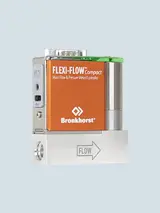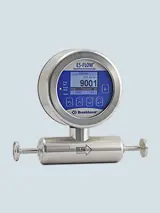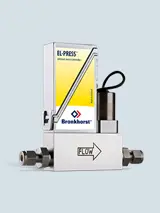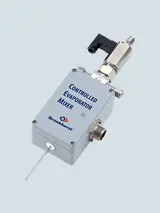{"column":{"component":"Media","content":{"media":{"src":{"mobile":"/media/eocn5u3g/chemical-lab-assistant.jpg?width=668&height=0&format=webp&v=1dbaf9ce0158fb0","tablet":"/media/eocn5u3g/chemical-lab-assistant.jpg?width=1145&height=0&format=webp&v=1dbaf9ce0158fb0","desktop":"/media/eocn5u3g/chemical-lab-assistant.jpg?width=1642&height=0&format=webp&v=1dbaf9ce0158fb0"},"alt":"Chemical lab","type":"image","link":{},"width":668,"height":0},"caption":""}}}

Precise dosing or liquid/gas substances can be considered as a challenge. However, when combining flow controllers with high pressure pumps, a simple yet complete solution is created to accurately dose liquefied gases at high pressures.
A liquefied gas is a gas at atmospheric pressure and room temperature, which is turned into a liquid by cooling or compression.
Application requirements
Liquefied gases have to be dosed in the liquefied state, which operates at high pressures (up to hundreds of bars). For accurate dosing of liquefied gases, the process conditions, especially pressure and temperature, have to be such that outgassing of the liquid will be avoided. Especially at low flows, it should be monitored that the required amount of liquid is dosed.
Important topics
Important topics
Avoid outgassing of liquids
Precise dosing at high pressures
Accurate flow measurement
Process solution
The process solution for dosing liquefied gases consists of a WADose High Pressure Lite pump with an attached heat exchanger, combined with a Bronkhorst Coriolis flow controller and an EL-PRESS pressure meter. The function of the heat exchanger is to cool the pump head to below freezing temperature, in order to stimulate liquid forming and to prevent cavitation and outgassing. This is to avoid pressure fluctuations and an unsteady liquid flow when dosing the chemical compounds.

The combination of the WADose piston pump and the flow controller allows for an accurate dosing of the liquefied gases. Stand-alone piston pumps are not hermetically tight and exhibit wear over time. Therefore, their setpoint may deviate from the real amount of chemical compound dosed, which is especially at stake when dosing low flows in the range of ml/min.
In the current combination, the dosed quantity is accurately measured in-situ using the flow controller, and this device controls the pump by adjusting the flow. This self-monitoring control circuit works continuously, making sure that the solution doses what it should do, so that ‘you know what you pump’ in real-time.
Prior to using this solution, the supply of liquefied gases typically occurred uncontrolled, thus lacking necessary precision.
This process solution boosts liquefied gas, typically from a gas cylinder, into a liquid at a higher pressure of about 200 bars. The pressure is monitored by a digital electronic pressure meter for measuring the process pressure as well as for safety functionality. This is to be sure that the pressure does not get higher than the devices or vessels in the process can withstand, to protect those components. No extra safety relief valves are necessary in this way.
In addition to the mass flow rate, the flow controller also continuously measures the density of the chemical compound. This is an extra measure of monitoring whether or not the compound is fully in its liquid state - and to which it can be responded immediately. Also, the temperature of the dosed compound is monitored by the mass flow controller.
This pump/controller combination is a complete plug-and-play solution without any engineering hours needed to be spent. Control parameters are easy to modify using the intuitive interface.
“You know what you pump in real-time”
"The combination of flow controllers and high-pressure pumps is a simple yet comprehensive solution for accurate metering liquefied gases under high pressures. "
Recommended products

EL-PRESS
Lab-style Digital Electronic Pressure Meter / Controller
Up to 400 bar
Suitable for non-inert (reactive) gases
Seamless integration with flow instruments
Wide portfolio
View range

mini CORI-FLOW
Coriolis mass flow meter for liquids & gases with controller output
For 0...300 kg/h
Accuracy *****
Best dosing solution by on-board controller
Suitable for any fluid
View range
Related articles

Gas supply in burner applications
Discover efficient gas supply solutions in burner and furnace applications with MASS-STREAM flow controllers, ensuring optimal combustion and reduced NOx emissions.
Read more

Gas supply in steelmaking
In steelmaking, blast furnaces convert iron ore into crude iron using carbon at high temperatures. To remove impurities, oxygen is blown into the pig iron, ensuring a well-mixed reaction. Bronkhorst provides precise mass flow controllers for inert gas supply, maintaining the movement of the iron melt and compensating for varying pressure. The compact design of these controllers is advantageous in limited spaces.
Read more

Controllers for chemical reactor systems
How to control pressure and flow in chemical reactor? Check out the solution: an accurate pressure controller combined to a mass flow controller.


















